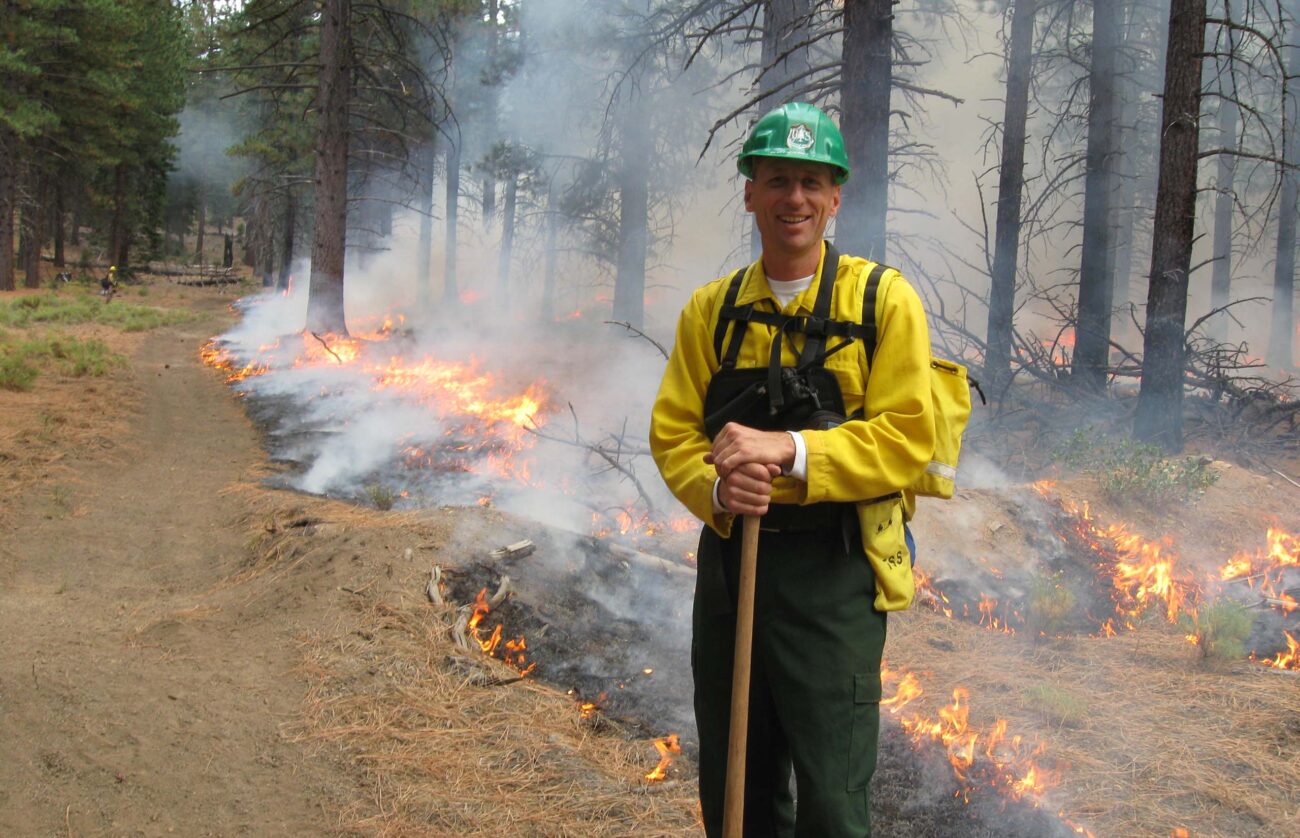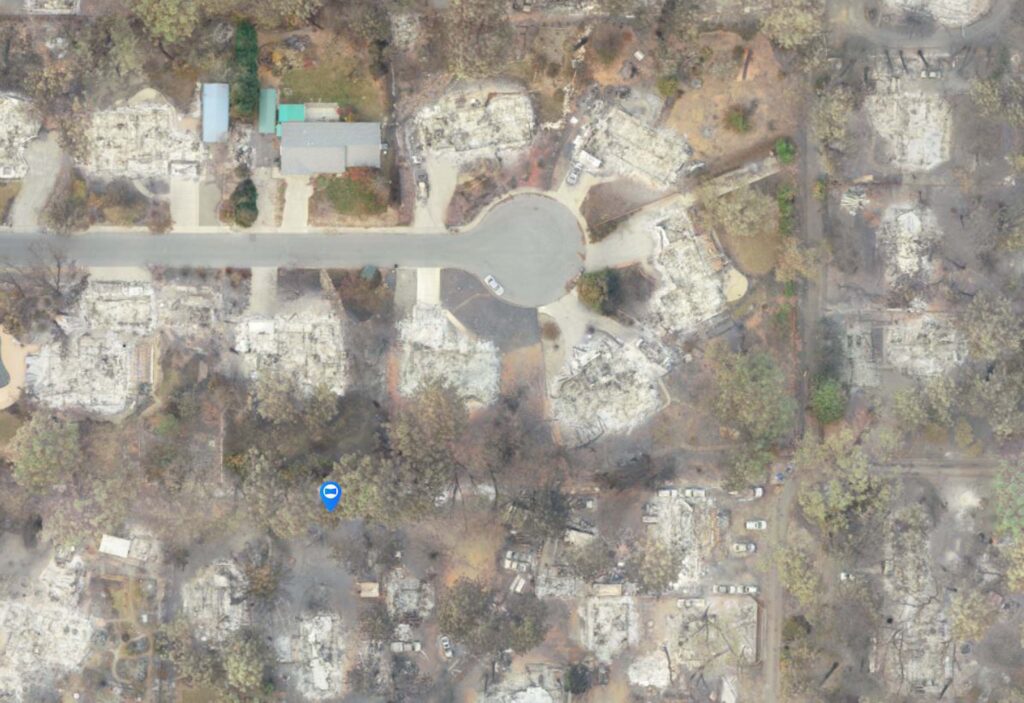
Photo credit: US Forest Service.
USFS Pacific Southwest Research Station Research Ecologist, Eric Knapp, gave an outstanding presentation at our September Chapter meeting, entitled Why Do Houses Burn in Wildfires, and What Can We Do about It? Not only is Eric a captivating speaker, but his talk was chock-full of excellent, extremely pertinent information for anyone who owns a home in our region. So important, in fact, that we are sharing it here to promote its distribution.
For anyone who would like to delve deeper, this presentation was created from research on the aftermath of the 2018 Camp Fire, published in August 2021. It is available online at the DOI provided at the end of the following citation:
Knapp, E.E., Y.S. Valachovic, S.L. Quarles, and N.G. Johnson. 2021. Housing arrangement and vegetation factors associated with single-family home survival in the 2018 Camp Fire, California. Fire Ecology 17: 25. https://doi.org/10.1186/s42408-021-00117-0

Photo credit: US Forest Service.
In addition, a couple days after the meeting, a member who attended the talk asked us if we recalled what plant species Eric recommended to suppress wildfire in home landscapes and gardens. Since we couldn’t remember any discussion about this, we posed the question to Eric, via email, and this is his very through response:
On what plant species to plant… you’re correct, I didn’t say much about that, focusing more on features you mentioned – plants that don’t accumulate much dead material, or where the dead material is easily cleaned from underneath. Plants with open structure. Succulents. One example native species I did mention that generally meets these criteria is redbud (Cercis occidentalis). I also said something about black oak (Quercus kelloggii) vs. dense conifers like incense-cedar. For the latter, I was asked about what native trees might be OK near the home. A deciduous oak might be a surprise recommendation because of the obvious leaf fall. But black oaks are late deciduous, many losing the bulk of their leaves in November around here, so after the normal end of fire season, and the litter is easily cleaned up. Conifers drop a lot of needle litter too, but just over a longer time period. And once on the ground, conifer needles decompose more slowly than leaves of deciduous oaks. But the feature I like most is the open crown of black oak, which is much less likely to propagate crown fire. I also mentioned one species not to plant, at least next to a house – juniper.
Many species that are green and lack dead material actually help suppress fire behavior because heat energy is absorbed to drive off the water within the plant before it can combust. But avoid plants with more volatile oils within. A low-growing green plant, if it dries out from nearby flames, produces lower flame lengths than a taller shrub where more oxygen is mixed with the fuels. I think Susan asked me about Salvia sonomensis, and this plant, while maybe not ideal due to volatile oils, wouldn’t concern me much unless planted immediately against the home. Low growing, not a lot of dead material underneath, so unlikely to produce excessive flame lengths. As with most species, it is a balance.
So much good information here! Please share widely and help to get the word out! ~Shasta Chapter CNPS
